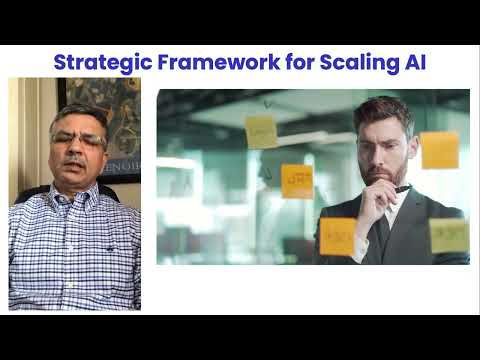The AI Healthcare Revolution: A Reality Check from the Clinic, Corner Office, and Code
- Dr Ajay Bakshi
- Apr 16
- 4 min read
Updated: Apr 28

The buzz around Artificial Intelligence (AI) in healthcare is deafening. We hear promises of diagnostic superpowers, hyper-efficient hospitals, and accelerated drug discovery that could reshape medicine as we know it. The term "revolution" is frequently invoked, painting a picture of imminent, sweeping change. And indeed, the potential is staggering.
As someone who has spent decades navigating the intricate worlds of clinical neurosurgery, leading large hospital systems, and now building AI-driven health tech ventures, I've witnessed firsthand the waves of technological promise that wash over healthcare. I share the excitement about AI's potential. I've seen algorithms identify patterns invisible to the human eye and models predict patient needs with uncanny accuracy in research settings. The possibilities seem immense: imagine AI enhancing diagnostics, helping radiologists, pathologists, and ophthalmologists detect diseases earlier and more accurately; streamlining clinical operations through intelligent scheduling, predictive staffing, and reduced administrative burdens; accelerating drug discovery and development by analyzing vast datasets to identify promising candidates faster than ever before; and even improving patient communication and coaching with personalized education, adherence support, and intelligent virtual assistants. Applications are emerging across the board, fueling the revolutionary narrative.
But I've also learned that translating technological potential into tangible, beneficial, and sustainable change in healthcare requires more than just brilliant code and powerful processors. It demands a healthy dose of realism, a deep understanding of the complex ecosystem it seeks to enter, and a willingness to confront the practical hurdles head-on.
So, let's perform a reality check on the AI healthcare revolution, looking through three distinct lenses that shape my perspective:
1. The Clinic Lens (The Neurosurgeon's View): Grounding AI in Patient Needs & Workflow
From the perspective of the clinician on the ground – the one making life-critical decisions – the primary question is: Does this AI tool genuinely help me care for my patients better, safer, and more effectively?
Potential: AI could alleviate diagnostic burdens, act as a vigilant assistant monitoring for subtle changes in patient condition, or even enhance surgical precision. Imagine AI helping prioritize urgent scans or flagging potential drug interactions specific to a patient's complex history.
Reality Check: Patient safety is non-negotiable. Can we trust "black box" algorithms when the stakes are so high? How do we validate these tools rigorously in diverse, real-world patient populations? Crucially, how does AI integrate into existing clinical workflows? If an AI tool adds cumbersome steps or doesn't intuitively fit how doctors and nurses work, it won't be adopted, no matter how clever it is. We need AI that augments, not hinders, the human element of care.
2. The Corner Office Lens (The CEO/McKinsey View): Strategy, Investment, and Organizational Change
From the boardroom and strategic planning sessions, the questions shift: Is this AI implementation strategically sound, financially viable, and operationally feasible for the organization?
Potential: The allure of operational efficiency – optimizing scheduling, predicting patient flow, streamlining billing, reducing administrative waste – is strong. AI holds the promise of significant cost savings and improved resource allocation in resource-constrained health systems.
Reality Check: Implementing AI is often a significant investment. Calculating a clear Return on Investment (ROI) can be challenging, especially when benefits are long-term or qualitative (like improved patient outcomes). Integrating new AI systems with existing, often aging, hospital IT infrastructure is a major technical hurdle. Furthermore, successful AI adoption requires substantial organizational change – retraining staff, redesigning processes, and fostering a culture that embraces data-driven insights. Resistance to change, regulatory hurdles, and ensuring scalability across potentially vast networks are critical strategic considerations.
3. The Code Lens (The AI Innovator's View): Capabilities, Limitations, and Data Dependencies
Finally, looking from the perspective of those building the AI models: What can the technology realistically achieve today, and what are the inherent challenges in its development and deployment?
Potential: AI excels at pattern recognition in large datasets, making it powerful for image analysis (radiology, pathology) and identifying complex correlations that might inform predictive analytics or drug discovery pipelines. The algorithms themselves are becoming increasingly sophisticated.
Reality Check: AI is fundamentally data-dependent. Its effectiveness hinges entirely on the quality, quantity, and representativeness of the data it's trained on. Biased data leads to biased, potentially harmful, AI. Ensuring data privacy and security is paramount. Many AI models struggle with generalizability – performing well in one hospital but failing in another with different patient demographics or equipment. The 'explainability' of AI decisions is crucial for clinical trust and troubleshooting, yet many advanced models remain opaque. Building, validating, deploying, and maintaining robust, reliable AI in the complex, dynamic environment of healthcare is a significant technical undertaking.
Navigating the Revolution Together
So, is the AI healthcare revolution real? Yes, the potential is undeniably transformative. But it won't happen overnight, and it won't happen by magic. It requires navigating the complex interplay of clinical needs, strategic imperatives, and technological realities – addressing everything from patient communication tools to diagnostic algorithms and operational systems.
The real risks – patient harm, data breaches, reinforcing biases, implementation failures – are significant and must be proactively managed. Our focus should be on identifying high-impact areas where AI offers clear advantages, prioritizing rigorous validation and seamless workflow integration, establishing strong ethical guidelines and data governance from the outset, and fostering deep collaboration between clinicians, administrators, and AI developers.
This balanced perspective – embracing pragmatic optimism while acknowledging the challenges – is essential. In future posts, I look forward to diving deeper into specific aspects of this AI-driven transformation, exploring topics like AI in diagnostics, operational efficiencies, patient engagement, drug discovery, and the ethical considerations involved. For now, the key takeaway is this: realizing the true potential of AI in healthcare demands more than just technological prowess; it requires wisdom, collaboration, and a steadfast commitment to improving human health, grounded in the realities of the clinic, the corner office, and the code.



Comments